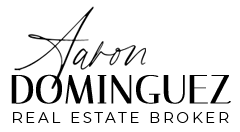Homeowners Insurance Myths in Eastern North Carolina
Aaron Dominguez
Discover the myths surrounding homeowners insurance in Eastern North Carolina, with insights into coverage limits, liabilities, and exclusions to keep you informed.
Homeowners Insurance: Separating Myths from Realities
Homeowners insurance is one of those things people usually forget about until they actually need it. By the time you’re dealing with an issue—like a severe storm causing roof damage, or unexpected water damage—it’s often too late to understand the facts about your policy. Here in Eastern North Carolina, where hurricanes and flooding can be a concern, it’s especially important to clear up common myths about homeowners insurance. Understanding these myths can help you make better decisions to protect your home.
Myth #1: Homeowners Insurance Covers Everything
A widespread misconception is that homeowners insurance covers every type of damage or disaster. Most policies have broad protection, but they come with exclusions. Common exceptions include:
- Flood damage: Standard policies typically don’t cover flood damage. You usually need a separate policy through the National Flood Insurance Program (NFIP) or private insurers. Given the history of hurricanes in Eastern North Carolina, flood insurance is crucial.
- Earthquake damage: This isn’t usually covered unless added on as a separate policy, though it's less of a concern in this region.
- General wear and tear: Homeowners insurance is for sudden accidental damage, not regular maintenance or age-related issues.
- Sewer backups: Standard policies generally don’t cover sewer or drain backups, but supplemental coverage is often available.
Understanding these exclusions is vital to ensure you have the right protection.
Myth #2: My Home is Insured for Its Market Value
Another misunderstanding is that your home should be insured based on its market value. In reality, policies are based on the cost to rebuild, not resale value. Market value includes the price of land and location, while replacement cost focuses on materials and labor to rebuild your home. Given fluctuating construction costs in areas like Wilmington or Jacksonville, it’s important to review your coverage regularly.
Myth #3: If Someone Gets Hurt on My Property, It’s Always Covered
Liability coverage in homeowners insurance does offer protection if someone is injured on your property, but there are exceptions. If the injury is due to negligence—such as a broken step you failed to fix—you might be sued beyond your policy limits. Additionally, if you run a business from home, standard policies may not cover injuries related to your business activities.
Myth #4: My Policy Covers My Valuables Fully
Most homeowners policies have limits for high-value items like jewelry, art, collectibles, expensive electronics, and firearms. If a valuable item is lost or damaged, your policy might only pay a fraction of its worth. Consider adding a scheduled personal property endorsement to specifically insure these items. Regularly reviewing your policy and appraising valuables is a smart practice.
Myth #5: I Don’t Need Additional Insurance Because I Work from Home
With more people working from home, a common myth is that standard insurance covers all work-related equipment and activities. However, standard policies often have limits on business property reimbursement and may not cover employer-owned equipment. For thorough protection, consider additional options:
- Home-based business policy: Provides broader coverage for business property and liability.
- Business property endorsement: Increases coverage for work-related equipment.
- Commercial liability coverage: Protects against lawsuits if someone is injured on your property in a business context.
Verify your coverage to avoid unexpected gaps if you’re working from home.
Myth #6: Homeowners Insurance Covers Mold and Termite Damage
Mold and termite damage are typically considered preventable issues rather than accidents, which is why most policies don’t cover them. If mold is a result of a covered peril, like water from a burst pipe, your policy might help with remediation. Otherwise, ongoing humidity or unnoticed leaks leading to mold will usually not be covered.
Myth #7: If My Neighbor’s Tree Falls on My House, They Pay for It
This myth catches many by surprise. Generally, your insurance covers damage to your property regardless of where the tree originated. If the neighbor was negligent—such as ignoring a dead tree—you might be able to claim their insurance or take legal steps.
Myth #8: Filing a Claim Always Leads to Higher Premiums
This isn’t always true. Insurers consider multiple factors when adjusting rates, including your claims history, the type of claim, and your location. In Eastern North Carolina, a single small claim might not affect your premium significantly, but frequent claims or large payouts could result in higher rates. Always weigh repair costs against your deductible before deciding to file a claim.
Final Thoughts
Homeowners insurance is vital, but it's not a one-size-fits-all solution. Knowing the facts about your coverage can help you avoid costly surprises. If you’re unsure about any aspect of your policy, it’s wise to consult your insurance agent for a thorough review to ensure you have the right protection in place.
If you have any questions about how homeowners insurance impacts your real estate decisions in Eastern North Carolina, feel free to reach out for a chat.
Thinking about selling your home?
Get in touch. We'll guide you through every step of the process to ensure a smooth transaction that meets your goals.


.png)
